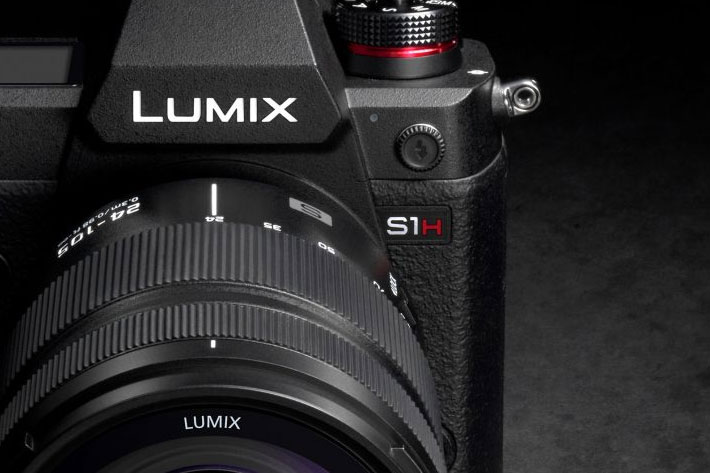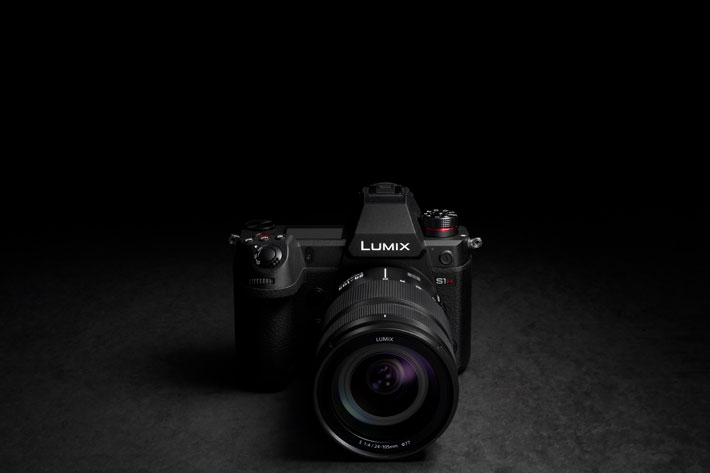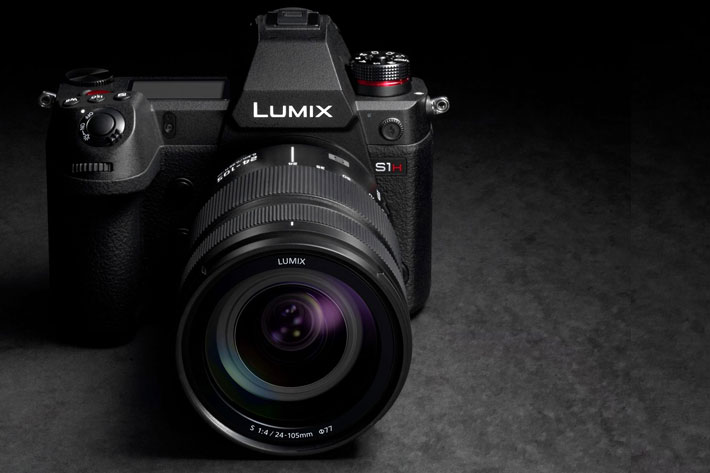
Designed especially for film production, the LUMIX S1H shows that Panasonic is not afraid to create a camera that, to a certain extent, competes with its own dedicated video cameras.
The Paramount Theater was the stage chosen by Panasonic to reveal the “exciting new secrets” the company will promise to unveil at Cine Gear Expo 2019. The secret was, surprising some, a new full frame mirrorless camera to join the existing models in the S family. I did write here at ProVideo Coalition, a few days ago, “that announcing a new LUMIX L-mount camera now, when the other models are yet to be available everywhere, does not seem to make much sense… but maybe Panasonic knows something we don’t know.” Well, Panasonic must know something I don’t, because the new camera is the LUMIX S1H, which will be released to world markets in Fall 2019.
https://youtu.be/gT2B_DUEbiw
The LUMIX S1H is the world’s first camera capable of video recording at 6K/24p (3:2 aspect ratio), 5.9K/30p (16:9 aspect ratio), and 10-bit 60p 4K/C4K, and it combines the video quality of a professional camera and the high mobility of a mirrorless camera. With this new model Panasonic now offers three choices in the LUMIX S series: the S1R, the S1, and the new S1H. The LUMIX S1R is ideal for capturing high-resolution images, while the LUMIX S1 is an advanced hybrid camera for high-quality photos and videos, and the LUMIX S1H is designed especially for film production.
Compete with cinema cameras
With this lineup, Panasonic is committed, says the company, to meet the demands of every imaging professional by challenging the constant evolution of the photo/video culture in today’s new digital era. It’s a bold decision, as this camera does, apparently, enter the realm of the dedicated video cameras from the company, a move that Canon has not dared to take.
This new model does suggest, though, that the S1, that many classified as the video-centric model of the LUMIX S1 family is no longer that, despite the fact that next July the LUMIX S1 will get Full V-Log recording, through a paid firmware update, allowing the camera to offer 4:2:2 10-bit 4K 24p/30p internal video recording and 4:2:2 10-bit 4K 60p HDMI output. Apparently Panasonic believes/knows there is market for all these mirrorless models, or else the company would not announce a camera that, no doubt, has been in development for a while now.
Key features of the LUMIX S1H
We’ll have more information about this camera in the near future, but for now here are the key features of the new LUMIX S1H:
- High resolution up to 6K for multiple formats
Maximizing the use of the pixels in the full-frame image sensor, the LUMIX S1H, as a digital camera, has achieved 6K/24p (3:2 aspect ratio) or 5.9K/30p (16:9 aspect ratio) video recording for the first time in the world.*1 It is also the world’s first full-frame digital interchangeable lens system camera*1 to enable 10-bit 60p 4K/C4K *2*3 video recording. It accommodates a variety of recording formats like 4:3 Anamorphic mode, to meet professional needs. Its high-resolution data can also be used to create 4K videos with higher image quality or to crop images in 4K. - Rich gradation and a wide color space virtually equal to those of cinema cameras
The LUMIX S1H features V-Log/V-Gamut with a wide dynamic range of 14+ stops, which are virtually the same as those of the Panasonic Cinema VariCam, allowing it to precisely capture everything from dark to bright areas. So much so, that the color and even the texture of human skin are faithfully reproduced. Designed under consistent color management, the S1H’s recorded footage is compatible with V-Log footage recorded by VariCam or the LUMIX GH5/GH5S. - High product reliability that allows unlimited video recording
In every S1H recording mode, video can be recorded non-stop under the certified operating temperature so the user can concentrate on shooting.
Final notes
The LUMIX S1H is, in the end, the sum of all the ideas previously suggested by rumors: it is not a GH6, but it does bring back the H that seems to be a sign of its “hybrid” qualities; it is not a true cinema camera, but it does borrow from Panasonic’s professional line enough features for its footage to be, as the company says, compatible with V-Log footage from VariCam and, on the other end, the LUMIX GH5/GH5S. It’s as if Panasonic is pointing the way to those used to the MFT models who may want to step up to a full frame sensor. It will be interesting to see how the market answers to this video-centric model, as Panasonic reveals mode detail about the camera.

















